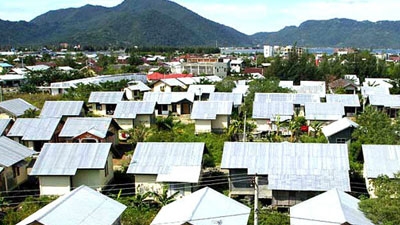Jakarta, Dec 26, 2012 - A visitor to Banda Aceh, the capital of the northernmost province of Indonesia, would marvel at its freshly-painted buildings, well paved roads, and busy shops. A lot has changed in the last eight years, when the earthquake and tsunami of December 26, 2004, devastated this city along with much of the coast of Aceh. In total, 286,000 people in 14 countries lost their lives, including 221,000 killed or missing in Aceh alone. The disaster was compounded when another earthquake severely damaged Nias, an island off North Sumatra, in March 2005.
These statistics are a sobering reminder every year on the anniversary of the disaster. But today, after eight years of reconstruction and unprecedented social and political changes in Aceh, it is possible to look beyond the destruction and reflect on what has gone well since that terrible day. The disaster and years of work that followed had an impact reaching far beyond Aceh’s borders, and provided the world with valuable lessons in disaster reconstruction.
A highly successful reconstruction effort
Aceh today is a transformed place, the result of a lot of money, good organization and hard work. Nearly $7 billion in contributions from the Indonesian government and international donors flowed in, fueling a boom in reconstruction activity. Nearly ten percent of these funds were contributed through the Multi Donor Fund for Aceh and Nias (MDF). The fund, which was managed by the World Bank, pooled funding from 15 donors and provided an effective mechanism for putting these funds to work. The MDF will close its doors at the end of 2012, marking the end of its mandate to support the reconstruction effort.
Lasting peace
The tsunami ended nearly three decades of conflict between the Indonesian government and a rebel movement. The conflict cost 15,000 lives and effectively cut Aceh off from the rest of the country, leaving the province with little growth or economic opportunities. The scale of devastation caused by the tsunami led to a peace agreement in 2005 and the first free election of Aceh’s governor. Prospects look good—the peace has held for the last seven years and through two election cycles. Resolution of the conflict has ended Aceh’s isolation and opened the door for development, investment, and economic reintegration with the rest of Indonesia and the world.
Indonesian expertise in disaster response
The Indonesian government, which led the reconstruction effort, faced a series of disasters after the tsunami, starting with the Nias earthquake in 2005. Between 2008 and 2010, Java was struck by earthquakes, tsunamis, and volcanic eruptions. Although these events led to loss of life and destruction, they also enabled the government to apply lessons learned in Aceh to new disaster scenarios. The result is a government with significant expertise in disaster management and preparedness. This knowledge has led to strong government policies and institutions, and the establishment of the newly-formed National Board for Disaster Management (BNBP) and the Indonesia Disaster Fund (IDF) which is largely modeled on the MDF. The government also gained valuable experience in managing international
Proven approaches
The MDF has contributed to Indonesia’s experiences to offer a robust approach to managing and preparing for disasters. Some key elements are:
- Using a phased approach, starting with rebuilding homes and communities, then progressing to infrastructure and finally to economic development, fitted to respond to evolving needs.
- Employing community-based development for rebuilding homes and local infrastructure, to maximize the effectiveness of community recovery.
- Designing cross-cutting elements into all projects, including disaster risk reduction, capacity building, gender inclusiveness, environmental protection and capacity development to enhance the quality of the reconstruction.
These approaches, pioneered in Aceh, have been replicated and tested elsewhere in Indonesia and have been studied by other countries when designing their own disaster response strategies.
Going forward
Because of the specifics of its geography, Indonesia is certain to face natural disasters in the future. But when the next one strikes, Indonesia will be much more prepared for it. Being prepared has positioned Indonesia to save lives and avoid the extraordinary reconstruction costs of the past. The Acehnese people, who paid such a heavy price eight years ago today, are now able to give back to the rest of Indonesia and to the world an incredible wealth of knowledge and experience in return for the generous support they received. Because so much was done so well in the years following the tsunami, the lives lost were not in vain.
To learn more, please visit www.multidonorfund.org.

